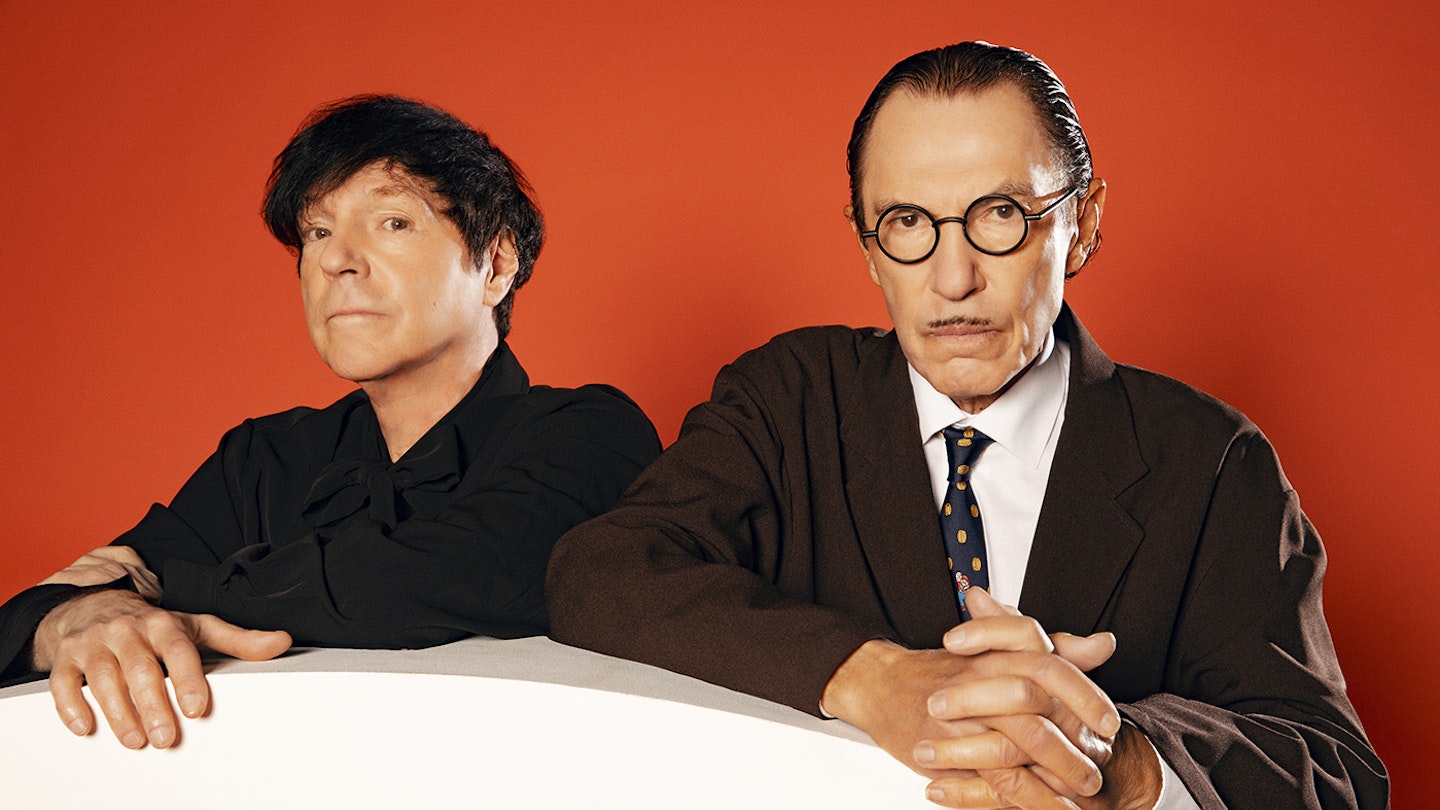They’re quite the pair, the Mael boys: Ron, 78 and his baby brother Russell, 75. Together as Sparks, they’re in their sixth decade of making albums. They’ve had their troughs, but those troughs have been commercial rather than artistic. Yet they’ve usually been popular somewhere: first the UK after 1974’s Kimono My House, then France, the US (West Coast only), Germany, the UK again and now seemingly everywhere from Austria to Australia.
-
READ MORE: Sparks interviewed: “It’s a disservice to pop music to come out with stuff that isn’t cool.”
Russell is Ron’s muse and Sparks producer since 1986’s Music That You Can Dance To. The songs are Ron’s. “I’m not a genius,” Russell readily admits, “but my brother is.”
The teetotal, drug-free Maels from Pacific Palisades have never married, although Russell has wed Jacqueline Kennedy, an unidentified Martian (“boy am I sorry”) and himself (“I’m very happy together”) in song.
From 1971’s self-titled Halfnelson (re-titled Sparks, as was the band, a year later) to 2023’s The Girl Is Crying In Her Latte, the pair have remained faithful to each other, even during the grim six-year hiatus between 1988’s much-under-rated Interior Design to Gratuitous Sax & Senseless Violins, the comeback which extended their lifespan by decades.
They’ve been less faithful to any musical style, lurching in and out of art rock, pop, synthrock, just rock and, of late, Sparksrock, an ever-evolving amalgam of the lot, with classical, hip-hop, krautrock and avant-garde undertows.
Perhaps the first two albums of their 26; perhaps 2000’s Balls and perhaps 2009’s musical The Seduction Of Ingmar Bergman are not superlative, although many a Sparks maven would disagree, but the quality of their output has remained remarkably unwavering. The hits we know, but Sparks have always been an albums act.
Ron is a name-dropper, from Veronica Lake (“That peek-a-boo-y hair; it’s a big mistake”) and Igor Stravinsky (“Hated minor thirds/Thought them too absurd”) to Madonna (“I said ‘can I see you again?’/She said ‘no’.”) and Morrissey on Lighten Up Morrissey: “She won't dine out with me/Says my T-bone steak is at fault/She won't dine out with a murderer, pass the salt”.
The wit is both laugh-out-loud and subtle, but there’s pathos to spare, hence swathes of their audience weeping when All That closed this summer’s concerts. There’s heart-on-the-table romance (“I never feel like garbage when I’m with you”); there’s sex (“I’ve still not recovered from Saturday’s faux pas, when your father came home, saw us and dropped dead”) and there’s understandable bitterness when Here In Heaven’s deceased narrator reflects upon a suicide pact which wasn’t. Invariably, it’s all set against earworm backdrops, ranging from impossibly lush to fiercely spartan.
How to pick just ten best Sparks albums, then? The bad news: it’s tricky. The good news: even if you might quibble with our selection, you can’t argue that every single record below is a corker.
10.
Big Beat
ISLAND, 1976
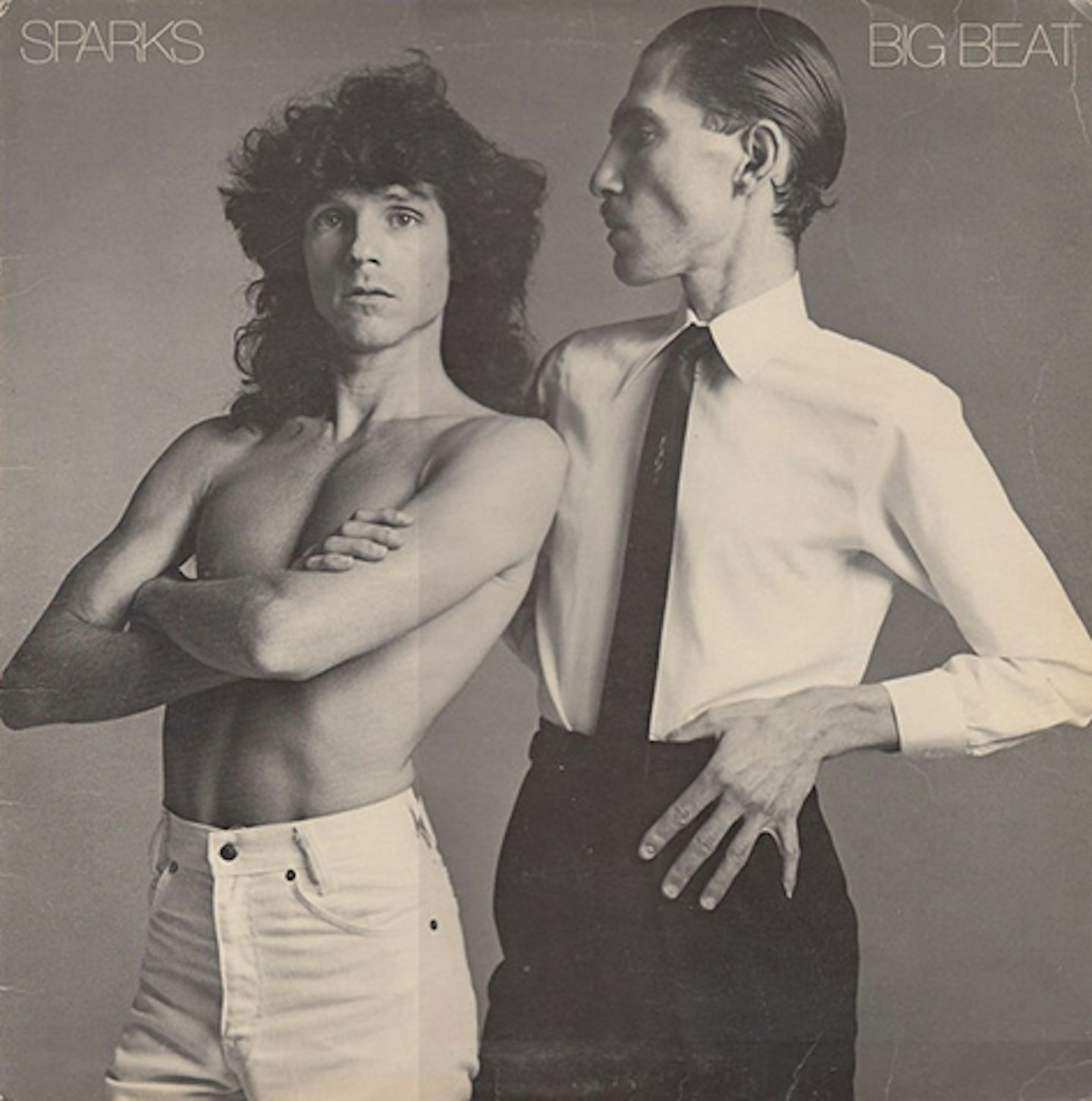
After their three-year London sojourn produced three commercially successful UK albums, the Maels dumped their British band and returned home, or at least as far as New York, to make their most direct, most overtly rock album. And how they rocked. Fresh from Rolling Thunder, Mick Ronson played on early demos, but he couldn’t commit, so Tuff Dart Jeff Salen drenched Big Beat in guitar and Ron switched to grand piano. Nothing To Do soars heroically; the sucker of I Bought The Mississippi River (“Of course that doesn’t include the towns or the people”) is immediately rueful and, while White Women dripped with irony, perhaps wisely it’s not been part of the live set since 1976.
9.
No1 In Heaven
VIRGIN, 1979
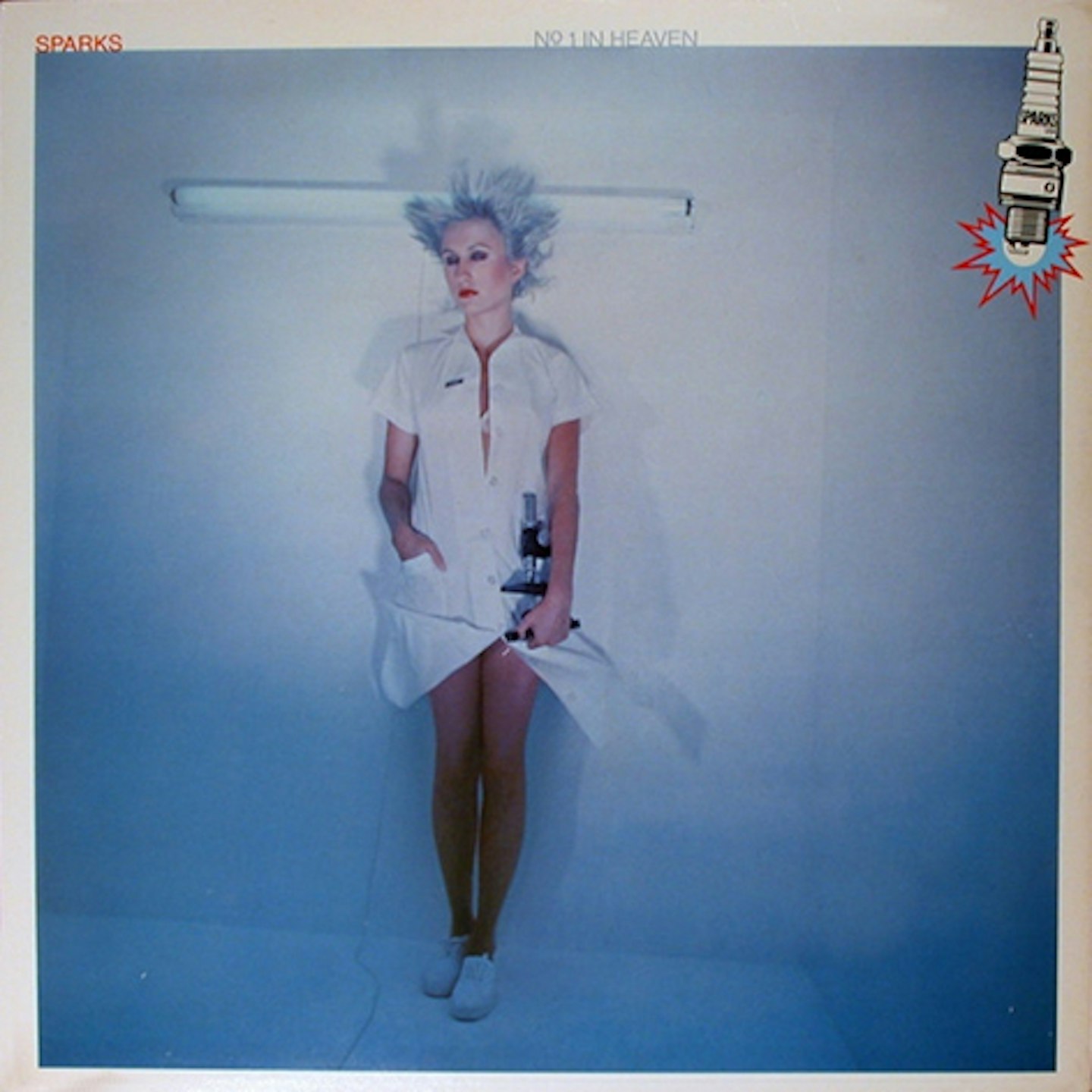
In 1978, the Maels told a German journalist that Giorgio Moroder was their new producer. Not to put too fine a point on it, they were lying. Not least because the writer was a friend of Moroder’s. She generously played cupid and one of the great musical turnarounds began. Russell’s voice was drenched in a synth tsunami, but Ron’s songs still thrived. The near title track and Beat The Clock were hits, but Tryouts For The Human Race was written from a sperm’s point of view… A second fib: according to the credits, it was recorded in Moroder’s Munich studio. In fact, the European-sounding magic was made in Los Angeles.
8.
MAD!
TRANSGRESSIVE, 2025

Faced with the delicious dilemma of being more popular than they ever were – MAD! would enter the UK charts at Number 2, their highest chart position - the Maels did what they always do and re-invented themselves. Not completely of course, for on MAD! their tendency for hypnotic repetition remained (Do Things My Own Way) as did their yen for a John Adams style flourish (I-405, the homage to Los Angeles’s most aesthetically pleasing freeway). This time though, backed by a band, they made their most spartan and clattering album since In Outer Space, leavened by an added layer of Ron Mael lyrical pathos, be it the friendly but frigid relationship of A Little Bit Of Light Banter or the archly lovesick My Devotion. It took a little time to fully unfurl its charms, but what charms they were. How very 2025 of them.
7.
Introducing
CBS, 1977
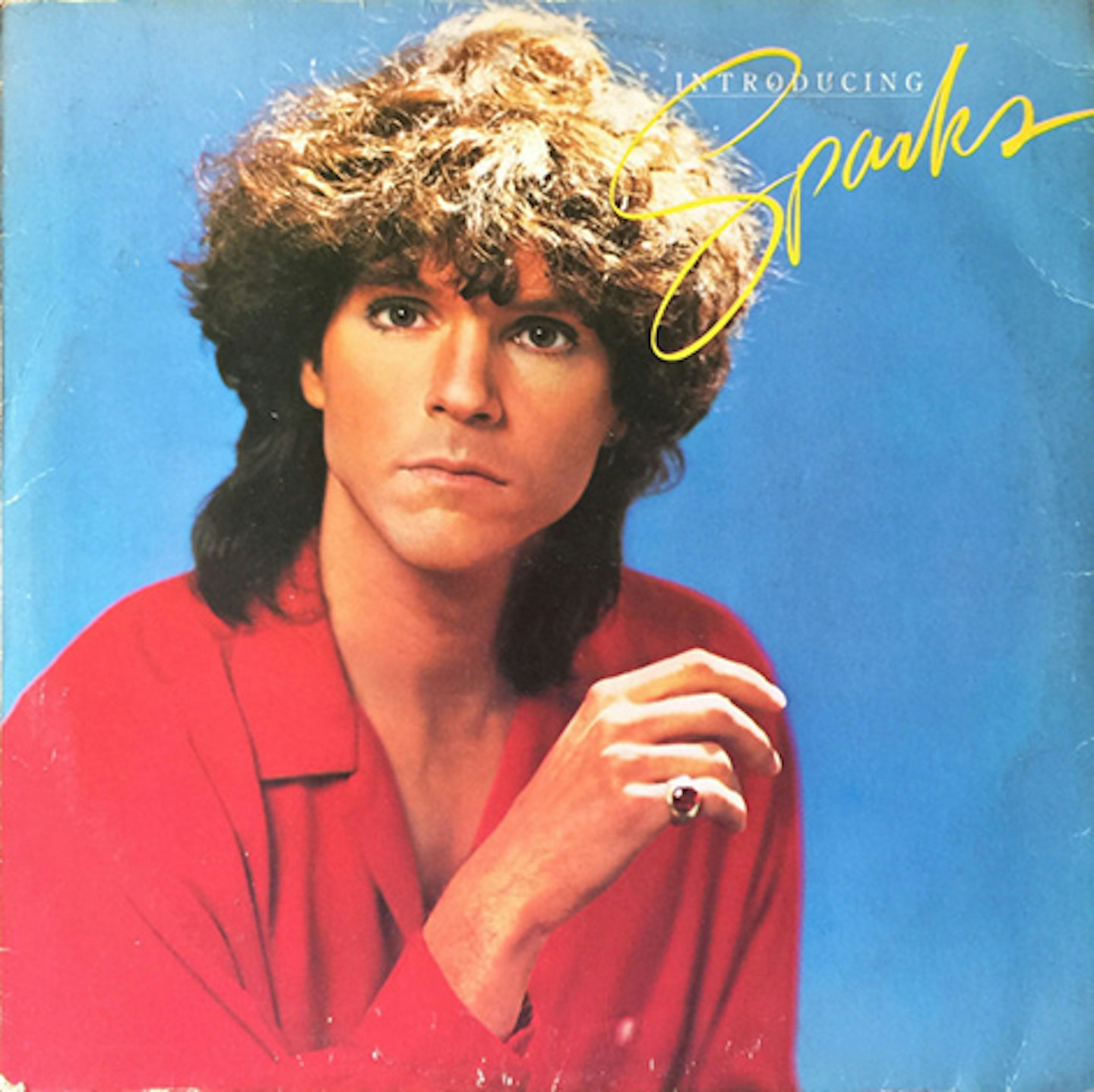
Their first album recorded in California since A Woofer In Tweeter’s Clothing was a commercial and critical flop, but its reputation has waxed over the decades. Relatively slick on the surface and played by a crack team of sessioneers – just the two members of Toto - Introducing introduced another Sparks. But it turned out they were great at this too and the fabulous songs were consistently lambent, from the hubristic Forever Young (the lyrical opposite to Bob Dylan’s Forever Young), to Goofing Off, which makes hedonism seem desperately sad, via Over The Summer, a Beach Boys pastiche where the girl gets sunburnt and Those Mysteries, which asks the pertinent question “why are there nuns?”
6.
Hello Young Lovers
GUT, 2006
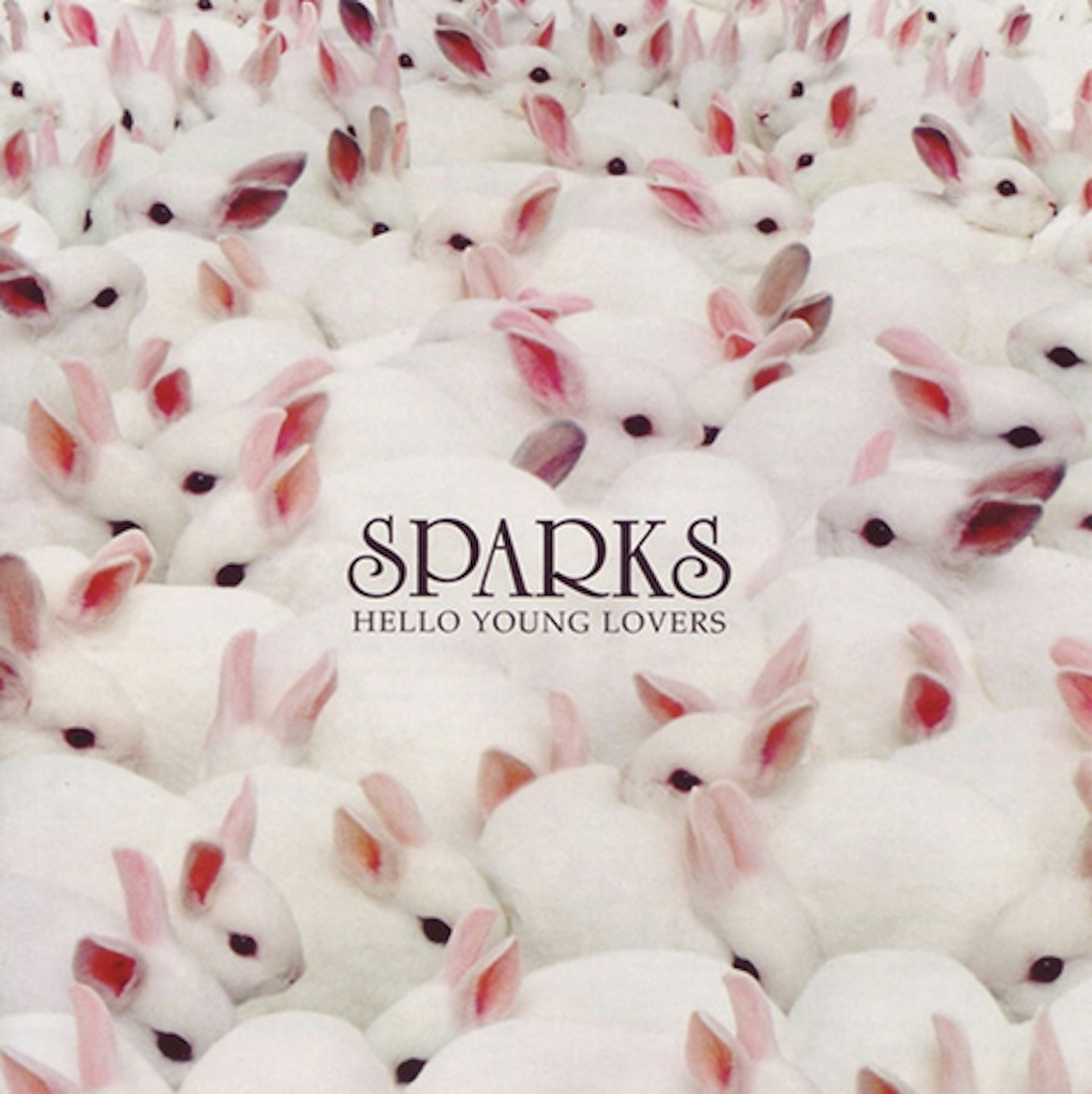
Sparks’ highest UK charting album since Indiscreet 31 years previously. Four years after Lil’ Beethoven re-defined them (again), they recruited Redd Kross’s Steve McDonald on intermittent bass to propel a subversive yet unashamedly poppy album where (Baby Baby) Can I Invade Your Country? included huge (credited) portions of The Star Spangled Banner, the tongue-twisting Dick Around was banned by the BBC and Waterproof was a waltz before the rapping section. There’s No Such Thing As Aliens contradicted their own A Fun Bunch Of Guys From Outer Space and the seven minutes of As I Sit Down To Play The Organ At The Notre Dame Cathedral were heroically, operatically deranged.
5.
Propaganda
ISLAND, 1974
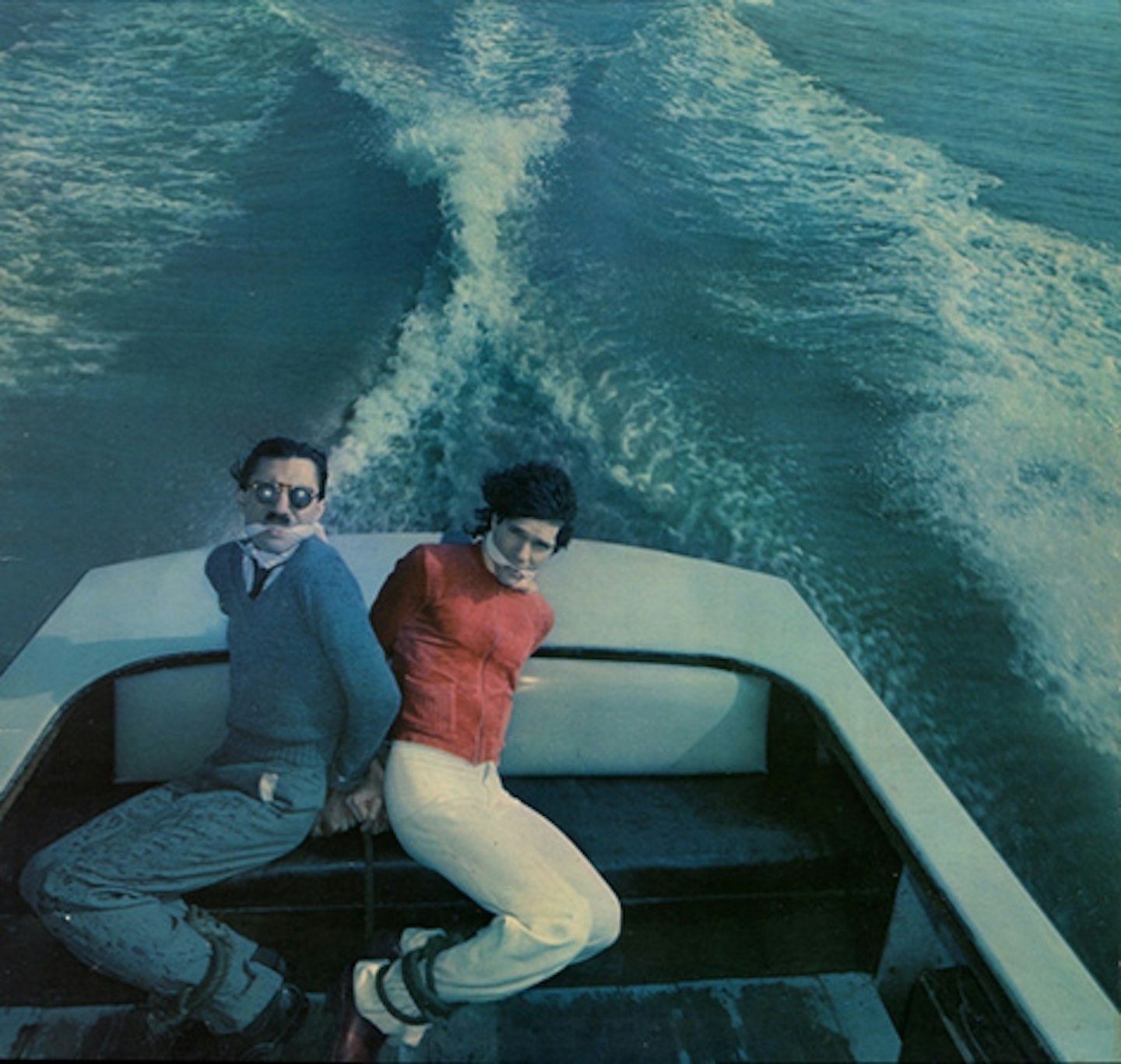
Having swapped a rented flat in Beckenham for the basement of esteemed writer Kenneth Tynan’s South Kensington house, the Maels were Londoners now. Sparks’ last UK Top 10 entry for 43 years appeared just six months after Kimono My House. Unashamedly rocky, it was packed with irresistible choruses and there were hits (Something For The Girl With Everything and Never Turn Your Back On Mother Earth). But this was Sparks, so there’s “when a potentate ain’t so potent in his state”, there’s Achoo collapsing in a fusillade of sneezing and there’s Bon Voyage, narrated by one left behind by Noah’s Ark.
4.
Lil’ Beethoven
LIL’ BEETHOVEN, 2002
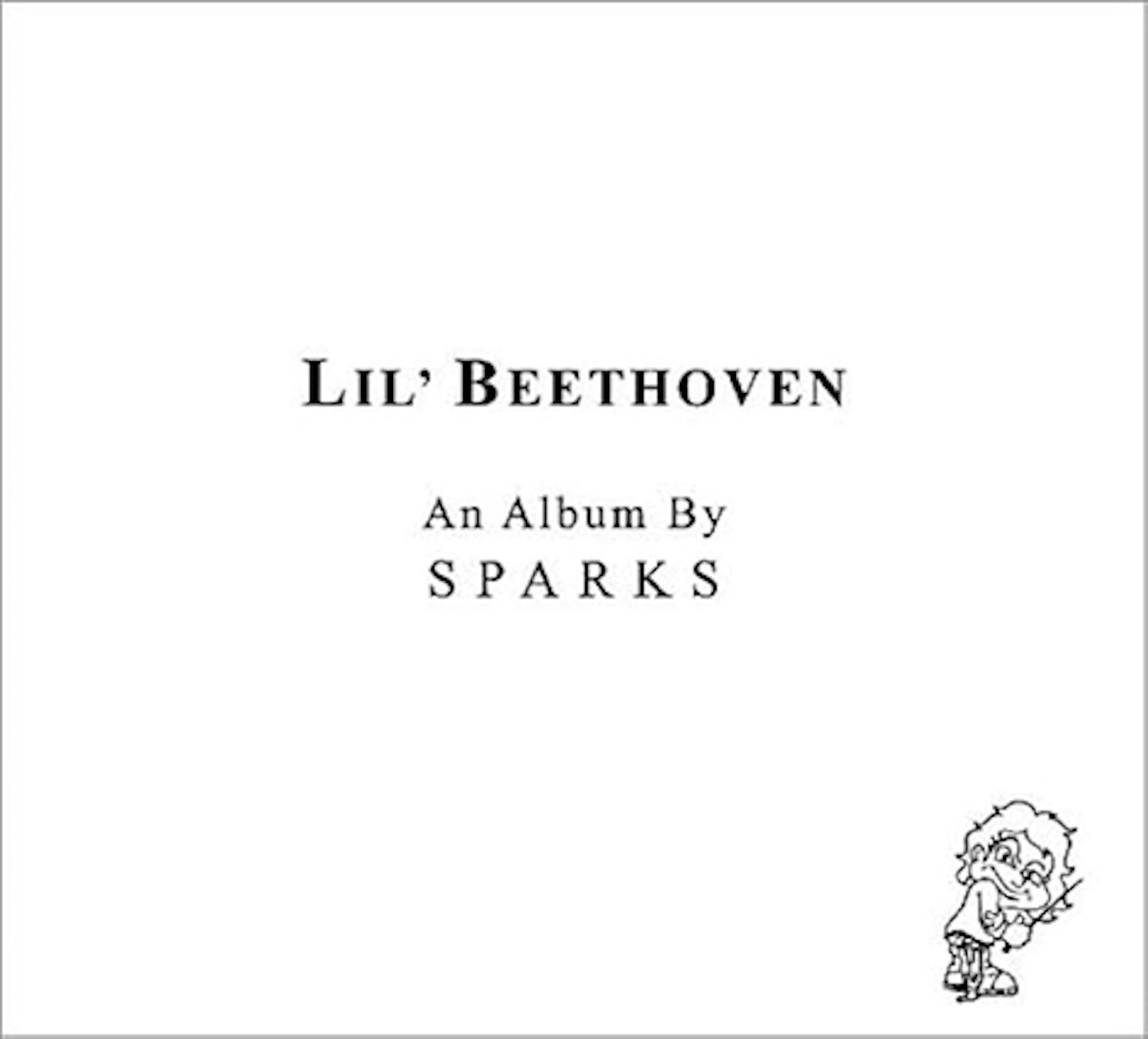
After the rare misstep of Balls, Sparks retreated from dance (“say goodbye to the beat,” trilled The Rhythm Thief) to embrace pounding piano, classical-style orchestrations and the power and beauty of Philip Glass-style repetition. That repetition reached its zenith on the mesmerising, dramatic My Baby’s Taking Me Home (“about my baby taking me home,” explained Ron, helpfully) where the title was endlessly repeated around a brief spoken interlude. Elsewhere, What Are All These Bands So Angry About? and the impossibly catchy Suburban Homeboy were biting yet kind satire. It didn’t break the commercial drought, but it paved the way for the renaissance.
3.
Music That You Can Dance To
MCA/CURB, 1986

The mid-’80s were tough for Sparks, but as their under-rated 14th album proved, it wasn’t for the want of trying. Part intense dance, part jaggedly experimental, the British edition was sabotaged by the unfathomable omission of the despondent Change (often cited by Ron as his favourite Sparks song), while their long-standing band was mostly superfluous and wouldn’t be used again. But with its radical, harmonica-free cover of Stevie Wonder’s Fingertips and the sublime (and sublimely wry) title track, their second album recorded in Belgium was their most European since Moroder. And the richly layered Rosebud, with its curious evocation of Talking Heads’s Life During Wartime, is perhaps the great lost Sparks song. Full-scale rehabilitation beckons.
2.
Kimono My House
ISLAND, 1974
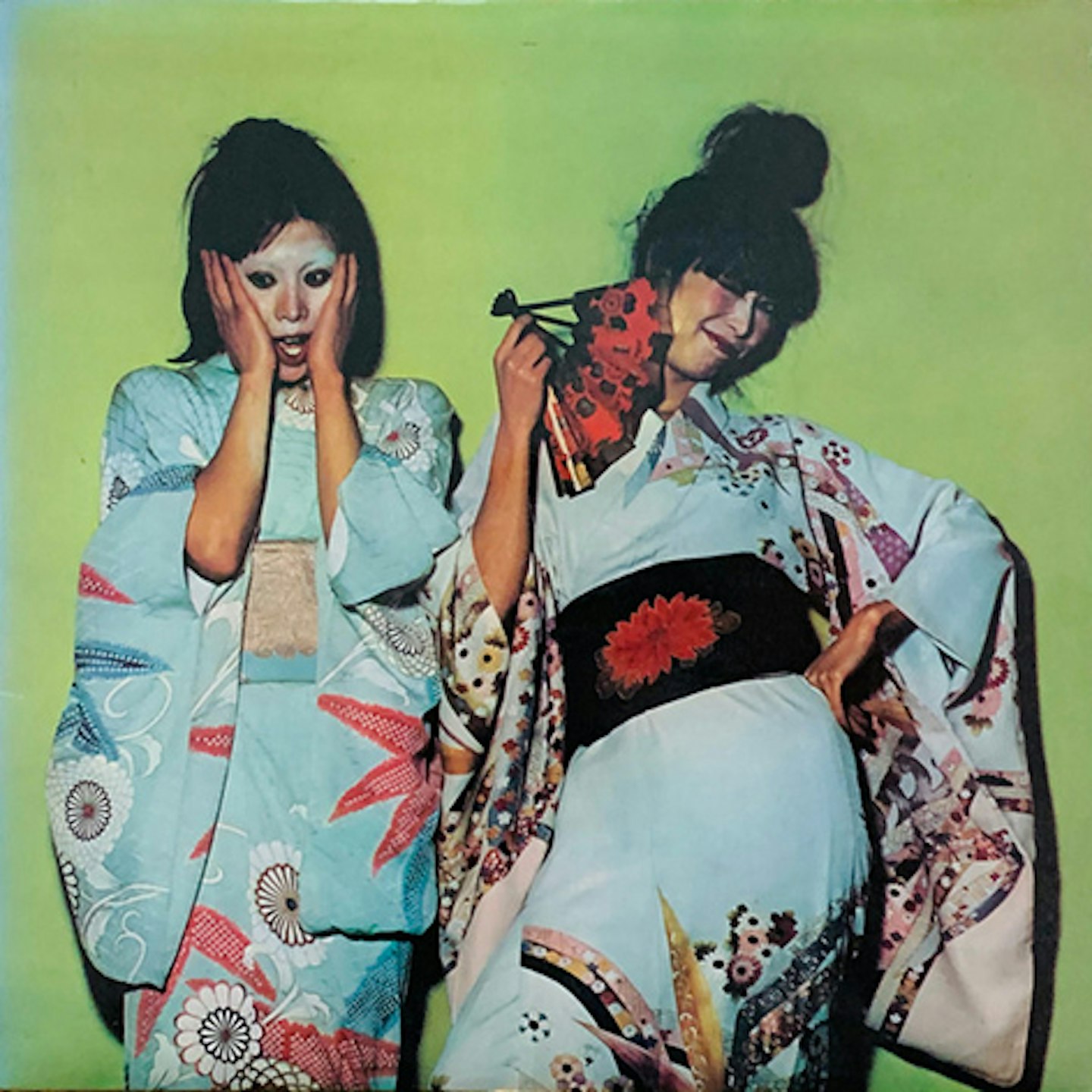
If This Town Ain’t Big Enough For Both Of Us on Top Of The Pops was many people’s entry point to Sparks, its parent album showed they were no one-song wonders. It still sizzles. After two false starts, they found their feet on this third album as the barnstorming choruses and deft lyrics (“It’s a lot like playing the violin/You cannot start off and be Yehudi Menuhin” noted Ron, of sex) eased into place. And there was Equator, ostensibly the tale of a missed date, delivered by beyond-falsetto Russell as if it were the end of the world. They don’t make them like this any more. They didn’t make them like this then.
1.
Gratuitous Sax & Senseless Violins
LOGIC, 1994
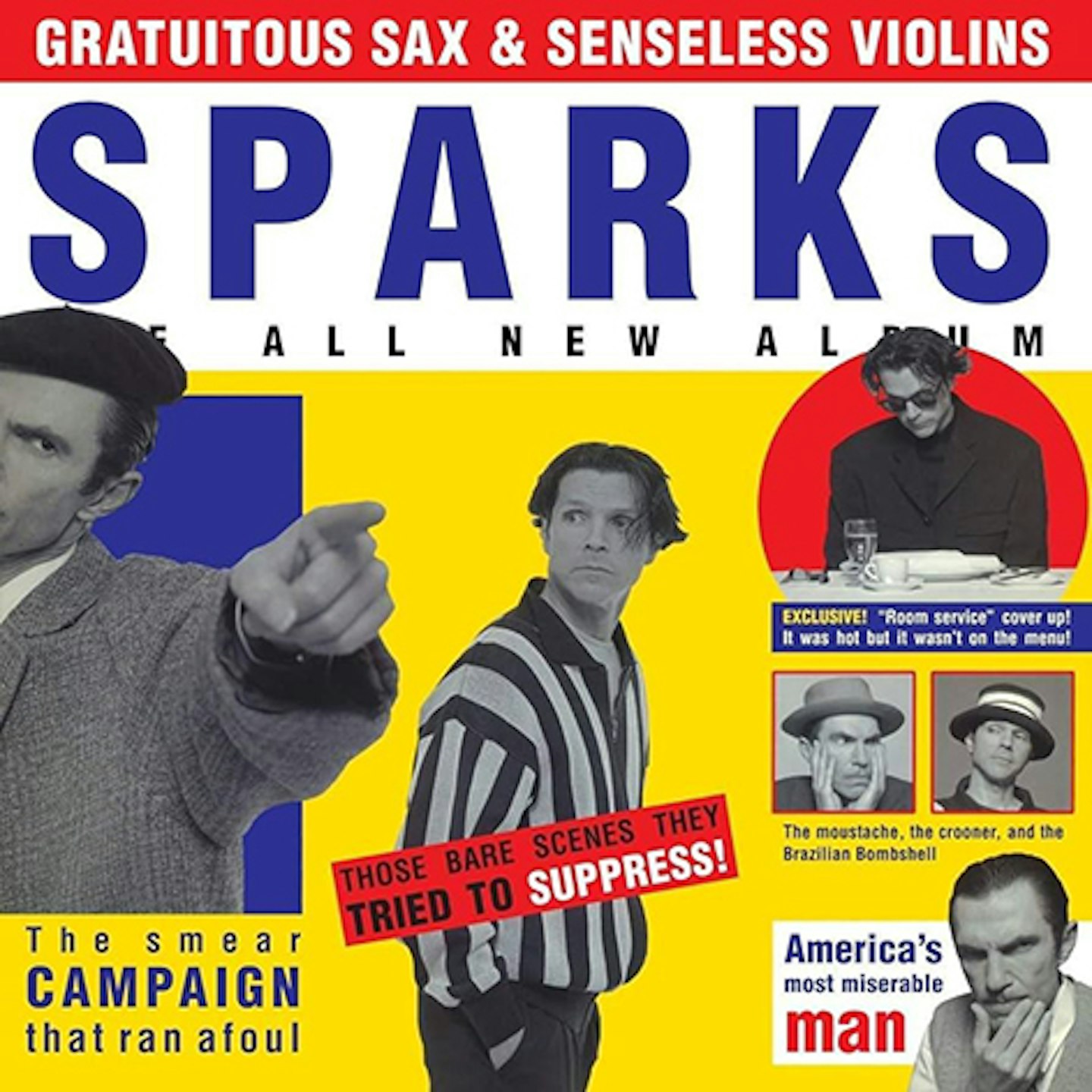
Six weary years of failed projects (the Mai The Psychic Girl movie; a clutch of unreleased songs such as She’s Beautiful (So What?)) and the building of their studio at Russell’s house (previously used by Arthur “Harpo” Marx for rendezvous with his mistress) followed Interior Design. Then, this. Not for the first or last time, they came back stronger, combining the Moroder years’ synth swirl – signed to the German label Logic, they finally achieved real success in Moroder’s native land - thumping hooks and Russell’s ever-evolving voice. Lyrically, they drew from their struggles, hence the frustration (“is my smiley face still on?”) of When Do I Get To Sing “My Way”, the emotional heft of The Ghost Of Liberace and of Let’s Go Surfing, while (When I Kiss You) I Hear Charlie Parker Playing lives up to its title. Astonishing.
Now try this...
The 81-track 2013 box set New Music For Amnesiacs: The Ultimate Collection, showcased all the albums, but it was short on rarities and accompanying detail. The Maels’ abhorrence of personal and relationship revelation hampered biographies by Dave Thompson (No 1 Songs In Heaven, 2009), Daryl Easlea (Talent Is An Asset, 2010) and Laura Shenton’s unnecessarily specific Sparks 1974 (2020). But without filling in all the gaps, the brothers partly opened up for Edgar Wright’s wonderful film biography The Sparks Brothers. They fulfilled a long-standing ambition by producing, arranging, and orchestrating their all-new soundtrack to Leos Carax’s Annette film. Their self-contained world leaves little room for collaboration, but the three songs they shared with Les Rita Mitsuko in 1988 were a joy and FFS, the pooling of resources with Franz Ferdinand, was a delight.

The latest issue of MOJO is on sale now! Featuring Nick Cave, Van Morrison, James Brown, Fontaines D.C., Joe Boyd, Françoise Hardy, The Jesus & Mary Chain, Doug Sahm, Cassandra Jenkins, Average White Band, The Jesus Lizard, The Police, Man, Syd Barrett’s floorboards and more! Plus, a bespoke CD of rare, live and classic Nick Cave tracks. More info and to order a copy HERE!

